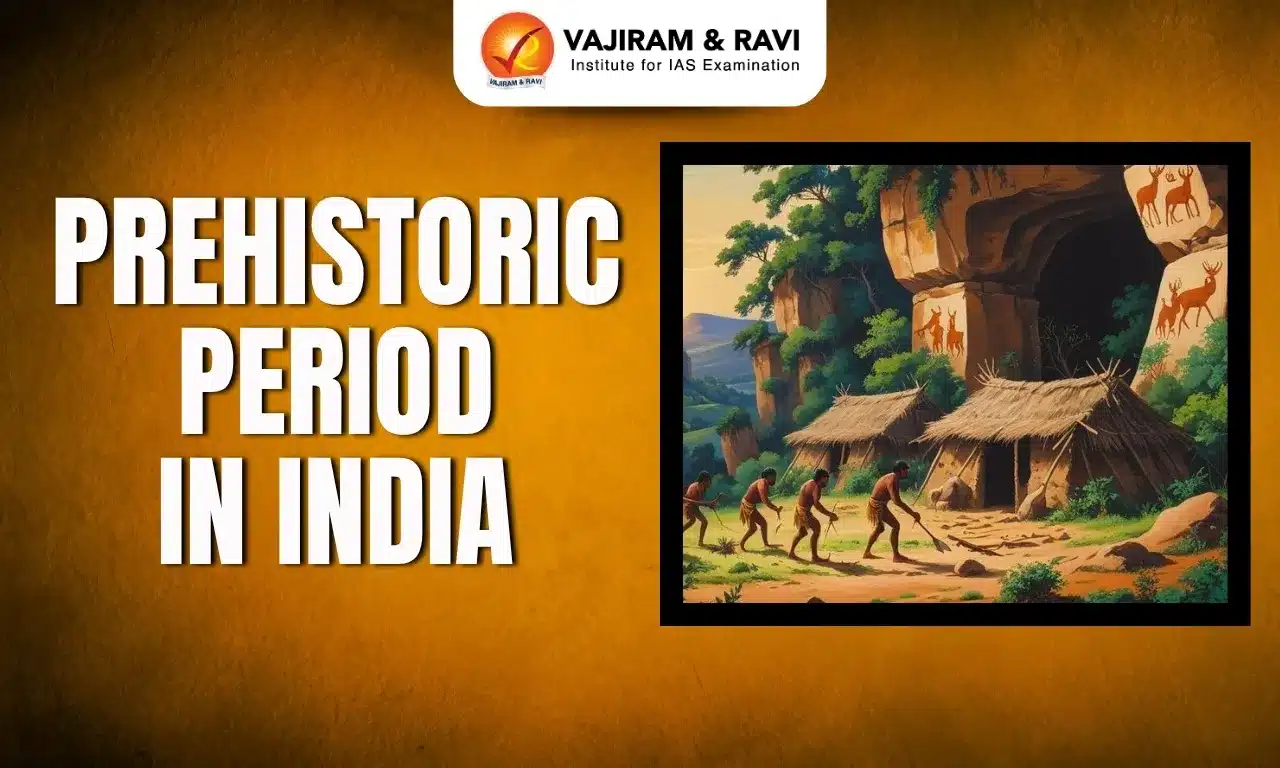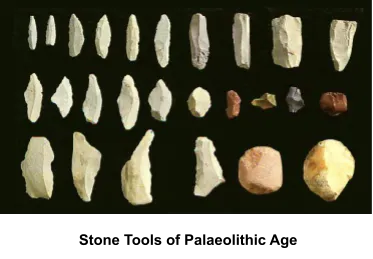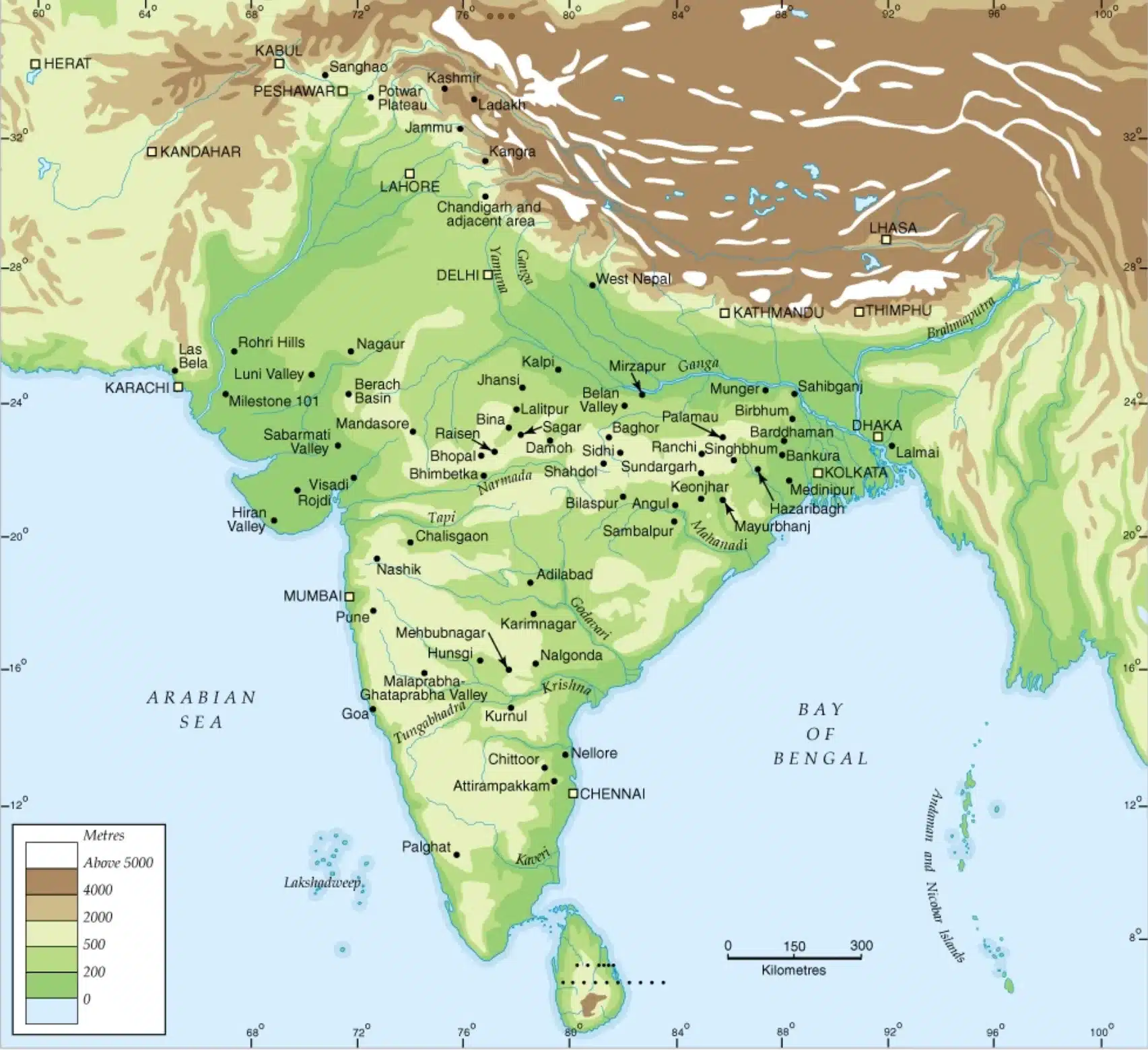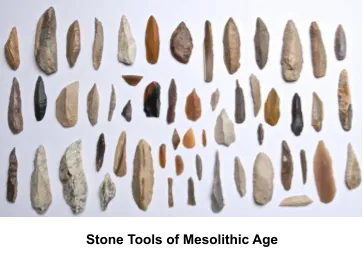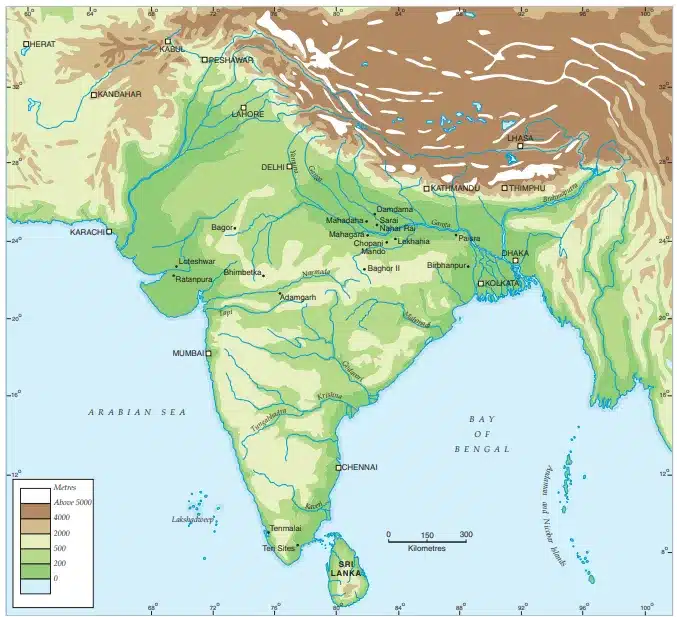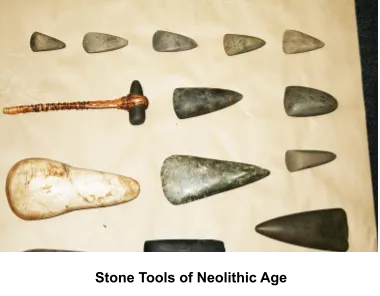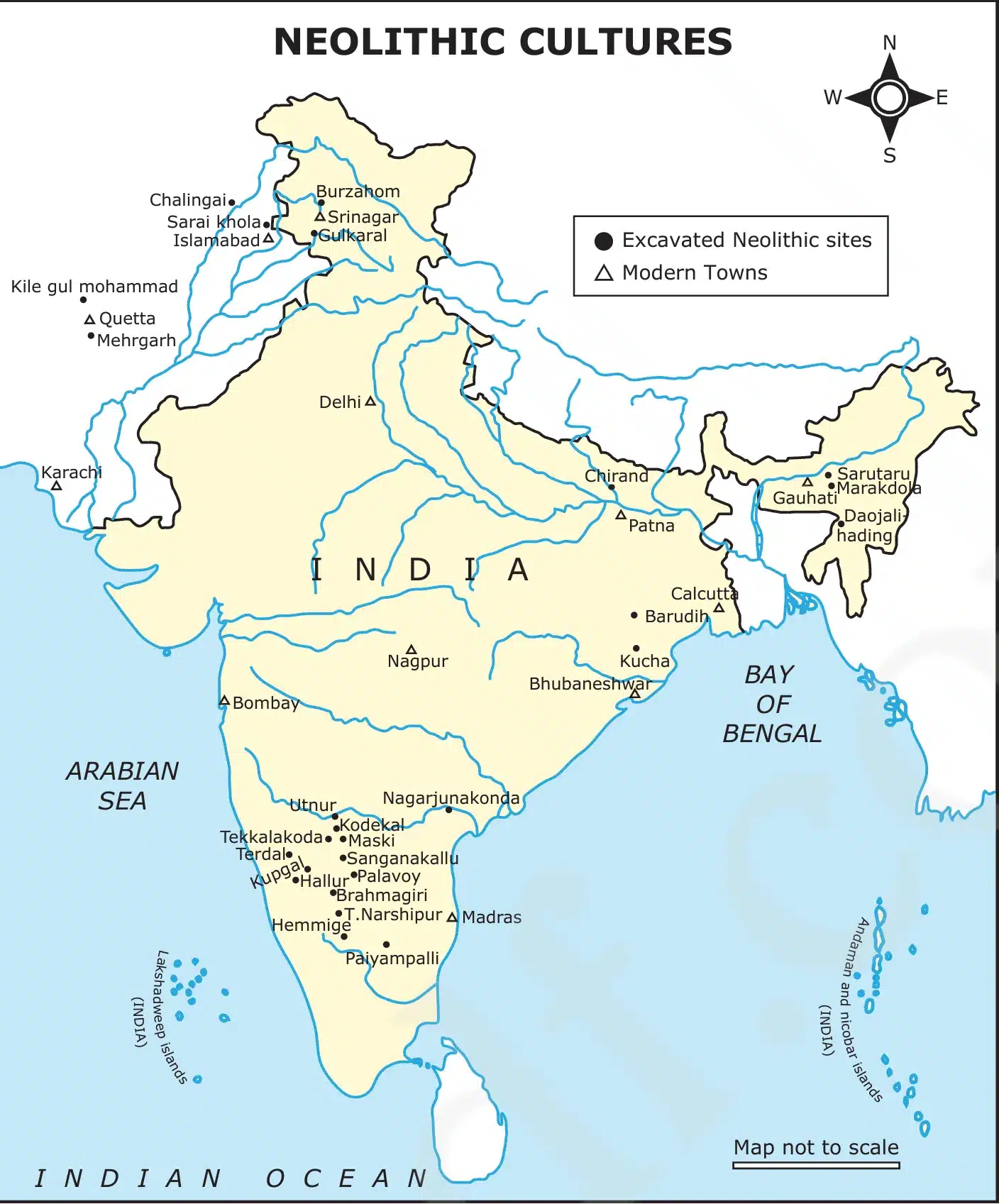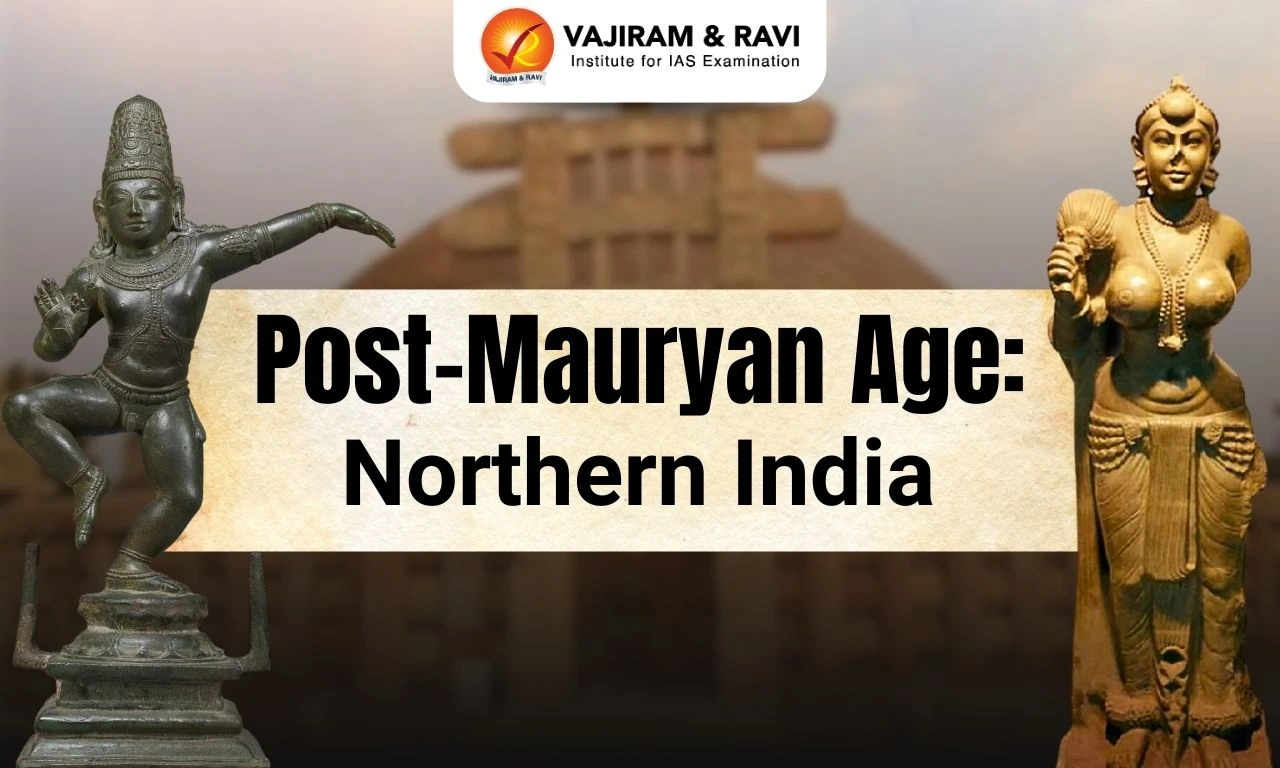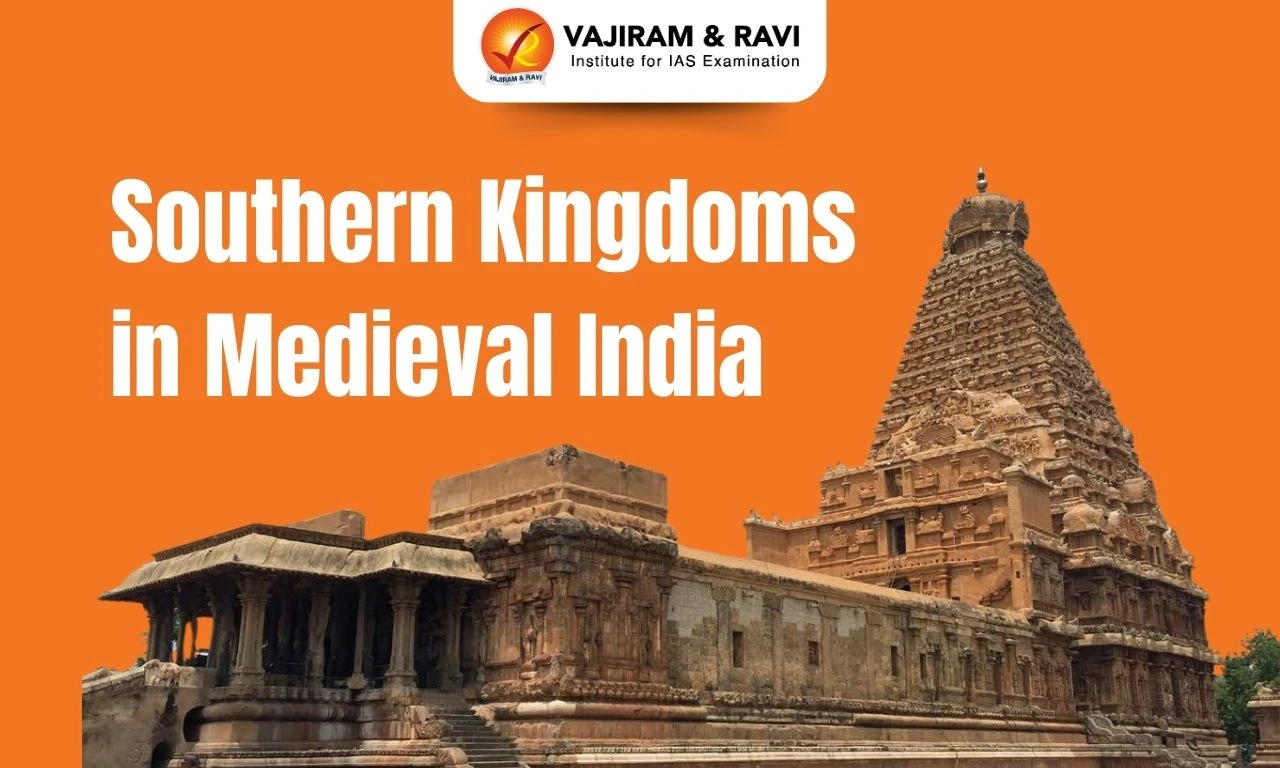The term prehistoric period also refers to the "Stone Age", when stone was generally used to create objects for the various needs of early humans. The tools used by humans and their ancestors in the genus Homo, as well as the earlier hominids Australopithecus and Paranthropus, are considered to be Stone Age artefacts. Although bone tools were also used during this time period in addition to stone tools, they are rarely found in the archaeological record. Based on chronology, typography, and other general characteristics, the Stone Age can be divided into the Palaeolithic, Mesolithic, and Neolithic periods.
There are instances in history where stone was not exclusively used for tools and technology, such as in the Chalcolithic Age, where copper was used along with stones. In some parts of history, stones were not even used as a tool but rather for burial practices, such as in Megalithic Culture.
What is the Prehistoric Period?
History has been classified as prehistory, Proto-History and history. Prehistory is the study of the beginnings and development of human societies prior to the invention of writing systems. It is also called the Stone Age due to the extensive use of stone tools during this period. Proto-history is an intermediate stage between prehistory and history, covering about the 3rd and 2nd millennia BCE. History is classified in other ways as the Stone Age, Bronze Age, and Iron Age.
Stages and Timeline of the Prehistoric Period
|
Phase |
Time Period |
|
Palaeolithic Age |
5,00,000- 10,000 BC |
|
Lower Paleolithic: 5,00,000- 100,000 BC Middle Paleolithic: 100,000 - 40,000 BC Upper Paleolithic: 40,000 - 10,000 BC |
|
|
Mesolithic Age |
10,000 - 4000 BC |
|
Neolithic Age |
7000 - 1000 BC |
|
Chalcolithic Age (Copper Age) |
2000 - 700 BC |
Palaeolithic Age of Prehistoric Period
The term "Palaeolithic" refers to the Old Stone Age of the Prehistoric Period because it derives from the Greek words palaeos, which means old, and lithos, which means stone. It belongs to the Pleistocene geological era.
- When assessing the evidence for early human settlement in India, it is observed to be later than the African region but contemporaneous with other Asian countries.
- Depending on the technology of tools used, economic activities, and other cultural features, the Palaeolithic age can be divided into,
- Lower Palaeolithic
- Middle Palaeolithic
- Upper Palaeolithic
Lower Palaeolithic Age in India
The earliest use of stone was started in the Lower Palaeolithic Age by Homo habilis and Homo erectus. People of this age were nomadic and dependent only on hunting and food gatherings.
- The stones were used as chopping tools like hand axes, cleavers, knives, and choppers made from large pebbles or flakes.
- Two main traditions: Soanian tradition and The Acheulian Prehistoric Period tradition
- Important Sites:
- Singi Talav in Rajasthan
- Bhimbetka and Adamgarh in Madhya Pradesh
- Lalitpur, Uttar Pradesh
- Paisra, Bihar
- Chirki-Nevasa, Maharashtra
- Hunsgi and Yediyapur in Karnataka
- Attirampakkam, Tamil Nadu
Middle Palaeolithic Age in India
This age witnessed a variety of tools made on flakes by specialised techniques, therefore referred to as the flake tool industry. Middle Palaeolithic culture in India is called Nevasian (similar to Mousterian), as flake tools were found at Pravara, Nevasa.
- Tools: small and medium-sized handaxes, cleavers, scrapers, borers, knives, large borers and awls, a variety of scrapers, anvils and hammers.
- Sites:
-
- Didwana and Budha Pushkar in Rajasthan
- Hiran Valley in Gujarat
- Potwar Plateau between the Indus and Jhelum rivers
- Sanghao Cave in NWFP of Pakistan
- Luni river system, denoting tool industries west of the Aravallis
- Chirki Nevasa in Maharashtra
- Kalpi in Uttar Pradesh
Upper Palaeolithic Age in India
Along with flake and core tools, the Upper Palaeolithic industries produced side scrapers, ovate scrapers, notched scrapers, discoid scrapers, and unifacial and bifacial flake points.
- Tools: Blades and burins, bone tools and specialised hunting tools.
- Sites:
-
- Rohiri Hills in Sindh
- Chopani Mando in Belan Valley,
- Baghor, in Madhya Pradesh
- Paisra in Bihar
- Haora and Khowai valleys in Tripura
- Kurnool and Muchchatla Chintamanu Gavi in Andhra Pradesh
Mesolithic Age of Prehistoric Period
The Mesolithic Age of the Prehistoric Period is a transitional age between the Palaeolithic and Neolithic that occurred around 10000 BCE and ended with the introduction of agriculture (beginning of the Neolithic Age).
- Climate: The phase is of variable length, depending on climatic factors like rising temperatures, warm and dry climates, and impacts on human life and fauna.
- Economy: Through hunting and gathering, fishing gained relevance.
- Tools: Microliths were the distinctive features of this age.
- Macroliths, the larger tools, were also used.
- Bone and antler tools were also used.
Mesolithic Age in India
Due to the favourable climate for agriculture (for the Neolithic Age), the Mesolithic Age in India lasted only for 10,000 years. Barring the Northeast, these sites are found throughout India.
- Sites: Mirzapur,
- Tilwara, Bagor, Ganeshwar in Rajasthan
- Langhnaj, Akhaj, Valasana, Hirpura, Amrapur, Devnimori, Dhekvadlo, and Tarsang in Gujarat
- Patne, Pachad, Hatkhamba in Maharashtra
- Morkhana, Lekhahia, Baghai Khor, Sarai Nahar Rai, Mahadaha, Damdama, Chopani Mando, Baidha Putpurihwa in Uttar Pradesh
- Pachmarhi, Adamgarh, Putli Karar, Bhimbetka, Baghor II, Baghor III, Ghaghariain Madhya Pradesh
- Paisra in Bihar
- Kuchai in Odisha
- Birbhanpur in West Bengal
- Muchatla Chintamanu Gavi, Gauri Gundam in Andhra Pradesh
Sanganakallu in Karnataka - Tenmalai in Kerala
Neolithic Age of Prehistoric Period
This new stone age developed in the Holocene epoch, preceded by the Mesolithic age. This prehistoric period was characterised by the development of agriculture, pottery and permanent settlement, thus marking the beginning of the first human civilisation often termed the Neolithic Revolution.
Neolithic Culture in India
- Sites: Kashmir Valley, Vindhya-Ganga Valley and Deccan and Peripheral Sites in Bihar, Jharkhand, Bengal, and Assam included the Late Neolithic Age.
- Characteristics:
-
- Tools: polished or ground stone axes, microliths and blades.
- Pottery: Early neolithic culture of a few sites, such as in Kashmir, Balochistan, and South India, was without any pottery. Later, earthen pots were the distinctive features.
- House: In the form of simple huts and pit dwellings
- Arts and crafts: Beads made of semi-precious stones and clay figures of animals and mother goddesses.
Chalcolithic Age in India
By the second millennium B.C., many parts of the Indian subcontinent had seen the birth of different regional cultures, which were defined by their use of metals, mainly copper and low-grade bronze. Thus, these societies are known as chalcolithic societies. Stone tools were also used.
- Chalcolithic cultures are named based on their location, such as Banas culture in Rajasthan, Kayatha culture in Madhya Pradesh and Jorwe culture in Maharashtra.
- The Chalcolithic culture, also known as the "stone-copper phase," lasted in India from approximately 2000 BC to 700 BC.
- This culture was prominent during the pre-Harappan period but was also present in various regions during the post-Harappan period.
Prehistoric Period in India PYQs
Question 1: Mesolithic rock-cut architecture of India not only reflects the cultural life of the times but also a fine aesthetic sense comparable to modern painting. Critically evaluate this comment. (UPSC Mains 2015)
| Other Related Posts | |
| Prehistoric Period | Indus Valley Civilization Sites |
| Chalcolithic Age | Rakhigarhi |
| Megalithic Culture | Lothal |
| Town Planning of Harappan Civilization | Kalibangan |
Last updated on December, 2025
→ Check out the latest UPSC Syllabus 2026 here.
→ Join Vajiram & Ravi’s Interview Guidance Programme for expert help to crack your final UPSC stage.
→ UPSC Mains Result 2025 is now out.
→ UPSC Notification 2026 is scheduled to be released on January 14, 2026.
→ UPSC Calendar 2026 is released on 15th May, 2025.
→ The UPSC Vacancy 2025 were released 1129, out of which 979 were for UPSC CSE and remaining 150 are for UPSC IFoS.
→ UPSC Prelims 2026 will be conducted on 24th May, 2026 & UPSC Mains 2026 will be conducted on 21st August 2026.
→ The UPSC Selection Process is of 3 stages-Prelims, Mains and Interview.
→ UPSC Result 2024 is released with latest UPSC Marksheet 2024. Check Now!
→ UPSC Prelims Result 2025 is out now for the CSE held on 25 May 2025.
→ UPSC Toppers List 2024 is released now. Shakti Dubey is UPSC AIR 1 2024 Topper.
→ UPSC Prelims Question Paper 2025 and Unofficial Prelims Answer Key 2025 are available now.
→ UPSC Mains Question Paper 2025 is out for Essay, GS 1, 2, 3 & GS 4.
→ UPSC Mains Indian Language Question Paper 2025 is now out.
→ UPSC Mains Optional Question Paper 2025 is now out.
→ Also check Best IAS Coaching in Delhi
Prehistoric Period in India FAQs
Q1. What is the C-14 dating method?+
Q2. What are the three ages of the Prehistoric Period?+
Q3. What are the three ages of the Prehistoric Period?+
Q4. Why is the Prehistoric Period called as Stone Age?+
Q5. When did the Prehistoric Period start?+



